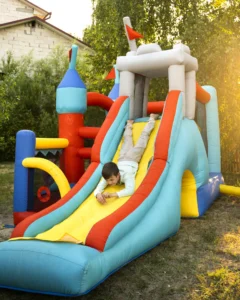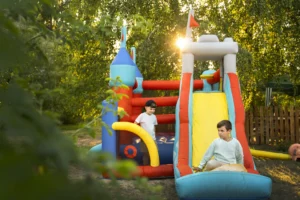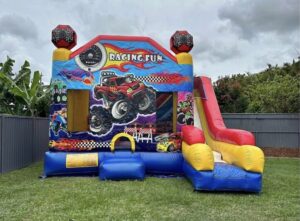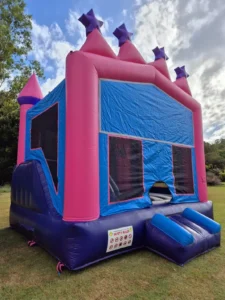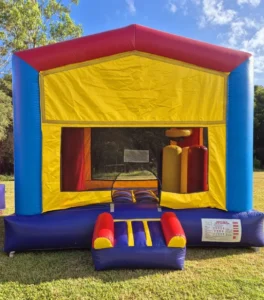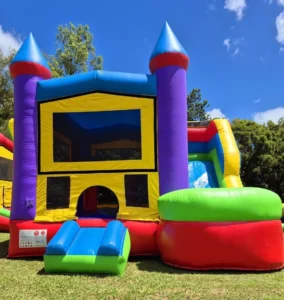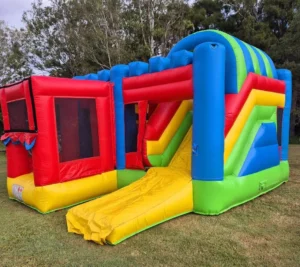How to Blow Up Inflatables Without the Hassle
When you’re figuring out how to blow up inflatables for a party or everyday fun, you’ve got plenty of options. Whether it’s a small pool float or a larger jumping castle, there’s a strategy that fits your time, budget, and muscle power. According to a survey by the American Red Cross, 65% of pool owners find inflating toys a hassle. But with the right approach, you can skip the frustration and dive straight into the good times.
Think about what you’re inflating. A simple beach ball doesn’t need the same method as a fully-fledged jumping castle hire. Once you match your inflatable to the right valve type and pump, you’ll see how smooth the process can really be.
Understand your valves
Valves control airflow in and out of inflatables. Some are better for quick filling, while others help maintain strong air pressure. Recognizing which type you have makes a difference in how you pump.
One-way valves
A one-way valve lets air in and blocks it from escaping. You often see this on beach balls or small pool toys. You can use any pump that snugly fits the valve opening. Just pinch the valve to open it, and fill until the inflatable feels firm.
Three-in-one valves
Three-in-one valves offer multiple layers to open for different levels of inflation or deflation. With these, you can top off your inflatable through a tiny opening, or fully deflate it by unscrewing the larger cap. They’re common on air mattresses or bigger floats that need quick deflation when it’s time to pack up.
Boston valves
Boston valves come in two parts. There’s an internal valve for rapid air intake and an external screw cap that seals it. They’re popular on inflatable kayaks, large rafts, and heavier-duty gear. If you’ve got a Boston valve, look for a pump with the right attachment so you can inflate fast and avoid leaks.
Choose your inflation method
Picking the right pump can save you time and a whole lot of sweat. Your options range from tried-and-true manual pumps to specialized electric ones.
Electric air pumps
An electric air pump is the quickest way to fill up large items like air mattresses, oversized floats, or an inflatable castle. You can find both corded and battery-powered models:
- Corded electric pumps: These plug into a wall outlet and deliver constant airflow. Perfect if you’re at home or near electricity.
- Battery-powered electric pumps: Great for camping, picnics, or pool parties where you don’t have an outlet handy. Just keep an eye on battery life before your big event.
Overall, electric pumps handle big inflatables efficiently. You’ll spend less time inflating and more time enjoying the fun.
Manual hand pumps
The classic hand pump is simple, budget-friendly, and never runs out of power. If you’re inflating small items or have limited access to electricity, this is a decent choice. You’ll get a mini workout pumping your float, but it’s a reliable fallback.
Foot pumps
Foot pumps work similarly to hand pumps, except you use your foot to push down and force air into the inflatable. They’re still manual, so it’s some effort, but at least your hands are free to hold the valve steady. If you only need a moderate amount of inflation, a foot pump can be a handy solution.
Leaf blowers and hair dryers
It’s tempting to grab a leaf blower or hair dryer if you don’t have a pump. Leaf blowers can fill large objects quickly, but you’ll need a decent seal between the blower and the valve. Hair dryers might inflate smaller toys, yet the air can be hot, which isn’t always ideal for some plastics. If you’re trying this approach, keep the dryer on the coolest setting, and be mindful that it won’t always give you the firmness you need.
Stay safe and efficient
When inflating something substantial, like a bounce house for a family reunion or a giant pool float shaped like a unicorn, a few key safety tips go a long way.
- Check your pressure: Over- or under-inflation strains the material and leads to tears or leaks. Watch how the inflatable feels. If it’s overly rigid or starts showing bulges, you may need to release some air.
- Clear your space: Before you set up, inspect the ground for sharp objects, rocks, or debris that could puncture your inflatable. No one wants a last-minute patch job when the party’s about to start.
- Supervise bigger inflatables: Items like a jumping castle often invite a crowd of eager kids. Make sure there’s a responsible adult keeping an eye on things for everyone’s safety.
Keep the fun going by knowing how to blow up inflatables right
Once you’ve chosen a suitable valve and pump, inflating your gear becomes a breeze. You’ll protect your inflatables from damage, save yourself from exhausted arms, and keep the party rolling. Whether you’re inflating a toddler’s floaties or a full-blown event-ready castle, the right method makes all the difference.
Feel free to keep experimenting until you find the perfect setup. If you’re considering bigger adventures, you might also love checking out how to inflate a bouncy castle to ensure you’re ready for the ultimate backyard bash.
Ready to Bounce? Book Your Castle Today!
Bring unforgettable joy to your next event, free delivery, easy setup, and zero deposit needed. Whether you’re planning a backyard birthday, school fair, daycare learning activities, or neighborhood party, our safe, colorful jumping castles are waiting.
Choose from popular options like our Rainbow Combo, Monster Truck Combo, or Jungle Obstacle Course for endless fun!
Serving Gold Coast, Logan & Beaudesert, plus Northern NSW with competitive delivery charges. Contact us now or submit your booking in just seconds!
Frequently Asked Questions
1. How much does a castle weigh??
The weight of a castle varies greatly depending on its size and materials. Medieval stone castles can weigh thousands of tons due to their massive stone walls and foundations. Inflatable castles, or bounce houses, weigh much less—usually between 50 to 200 pounds depending on size and materials.
2. How much are inflatable bounce houses?
Inflatable bounce houses typically range from AU$200 to AU$300 for consumer-grade models. Commercial-grade inflatables cost between AU$1,000 and AU$3,000 or more. Rental prices average around AU$150 to AU$300 per day depending on location, size, and time of year.
3. How to make inflatables?
Making inflatables involves designing a pattern, selecting durable materials like vinyl or nylon, cutting and sewing the panels together, and installing air-tight seams. The final product requires an air blower to keep it inflated during use. Specialized equipment and skills are necessary for safe and durable inflatables.
4. How much are inflatable bounce houses?
Inflatable bounce houses typically range from AU$200 to AU$300 for consumer-grade models. Commercial-grade inflatables cost between AU$1,000 and AU$3,000 or more. Rental prices average around AU$150 to AU$300 per day depending on location, size, and time of year.
5. Should I store my pump in a special way?
It’s best to keep your pump in a dry place and away from direct sunlight. For electric pumps, ensure cords aren’t tangled or frayed. Proper storage extends the life of your equipment.
Key takeaways
- Match your valve type (one-way, three-in-one, Boston) to the right pump.
- Consider electric pumps for speedy filling, or manual options for budget and portability.
- Keep the inflation process safe by clearing sharp objects, monitoring pressure, and supervising children.
- Choose reliable methods to avoid leaks or damage, so you can enjoy maximum fun with minimal fuss.




